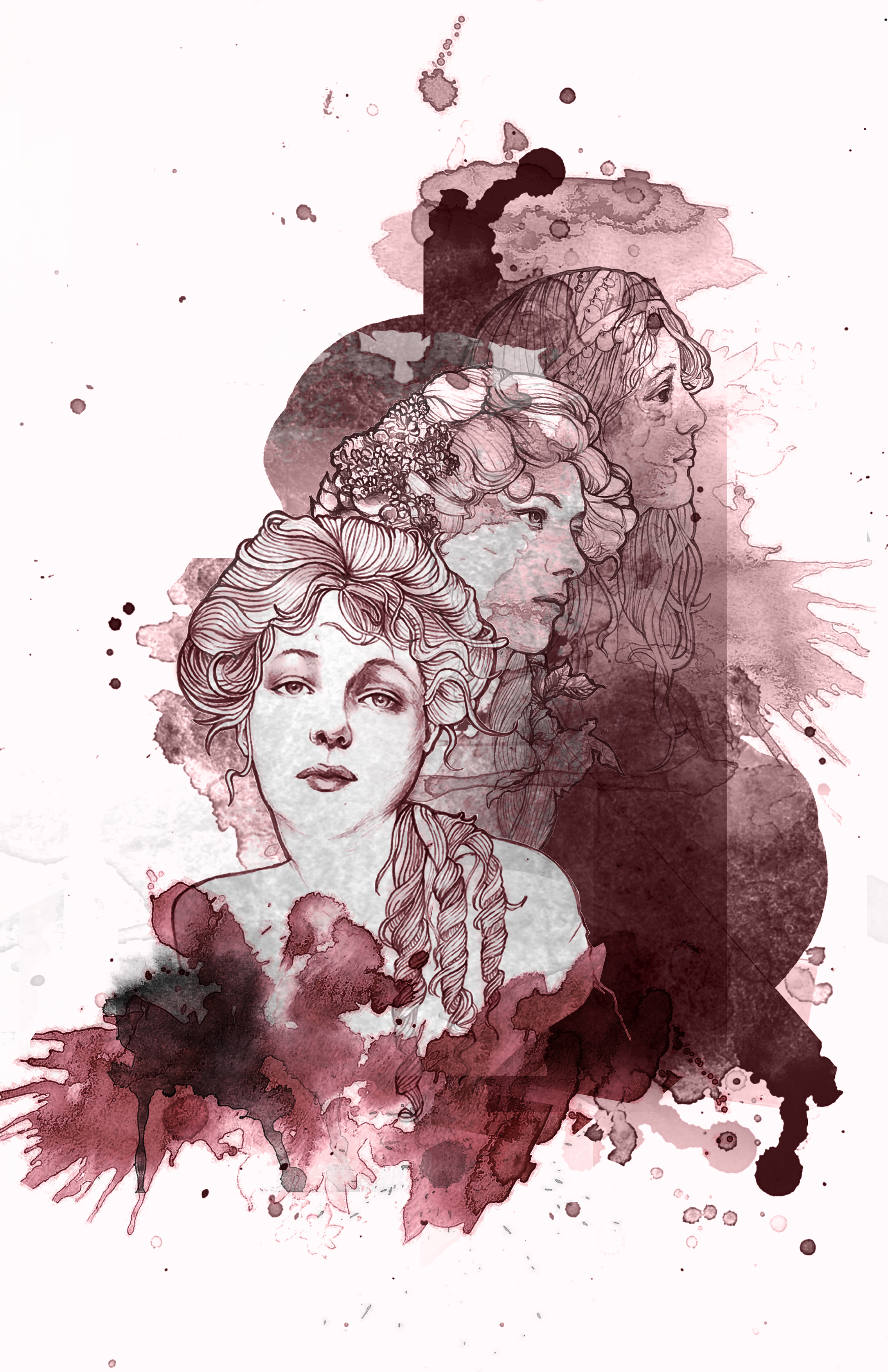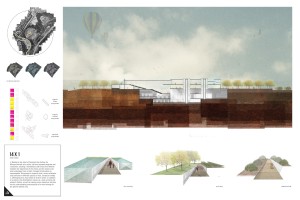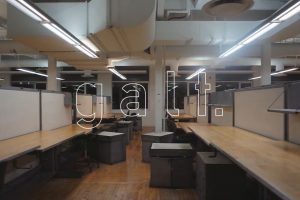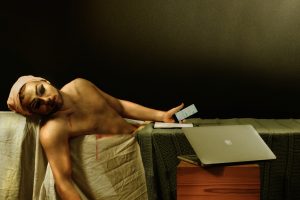It is New York City, 1906, with all the wonder and wealth of the new American aristocracy. But beneath the city’s gilded surface simmers a volatile and frenzied world – a world fuelled by raw impulse, obsession, and sensuality. This is a story of doomed love constructed like the fevered and fragmented images created in the imagination; at its centre, the artist’s model and muse, Evelyn Nesbit. She inspires desire from New York’s most famous architect, Stanford White, the richest man in America, Harry Thaw, and a young artist, John Barrymore. The players in this game are moving sculptures: proto-architecture that re-interprets form by creating and fabricating realities, where the unknown is not something that lies outside the city, but within our minds.
We are not Responsible for the things we come to be.
Every summer, the 2B architecture class participates in the full production of play based on literature, historic events and iconic cultural characters. The script writing, acting, music, set, props, lighting, choreography, costumes, publicity, fundraising and budget are done entirely by the class of 76 students with the guidance from the 2B Renaissance Iconography Professor Tracey Eve Winton.
As a 2B student who participated in the MUSE production, I have tried to explain to my parents, my friends at home and the baristas of Cambridge how this exercise relates back to our architectural education. Muse’s Director Shannon Kennelly gracefully puts these explanations to rest, “It’s experiential. The play is an architectural creation that unfolds against time – just as tangible, built architecture is also experienced unfolding over time, with people (an audience) light, sound etc. It was refreshing to design something, and then build it, and not only that but then to observe what you’ve made, reconfigure, re-work adjust to reality’s new perspective and then use it. We were the clients, the designers, the architects, the project managers, the advertising marketers, the caretakers and the workers who used what we had made every day – we lived with our design. This relates back to the architectural profession as a whole and its roots in culture and technology. It let us do a bit of research into things that contribute to how we perceive space, for example the choreography for me was very telling of how a space could feel, based on how we had actors or even the audience move through that space. MUSE for me (for all of us) was a life-changing exercise in teamwork and in making.”
Kennelly goes on to describe the direction and goals of the production, “In terms of the overarching design, we focused on people and their experience of space, using contradictions and layers to stimulate an environment which drew out a building tension and corresponded to the darker mood we were trying to capture and hold. We worked to find an ethos that translated the architectural/spatial manifestation of the script into an emotional idea delivered in a unique and original narrative. It was important for me to add many layers of different interpretations of meaning (evident in the play’s name, tagline, and hopefully the performance) and keep the scenic visual manifestations of duality (or multiplicity) present through the process. Muse is about memories, the problems and processes of making, exploring the moment of creation, fantasies, self-re-making and turning ideas into reality – the ultimate struggles of an architect. Throughout the course all of this, it is pursued with the hopes of doing so in a product of meaning. Muse is about the human aspect of architectural ideas, projections and perspectives.”
Along with Shannon, the class was led by a very successful team of coordinators. Each took a bit of time to talk about their roles, their team’s vision and some of their learning experiences.
Shannon Kennelly, Director
I was the Director of MUSE, and the least integral member of the League of Shadows (extras). I was extremely excited to take on this project – my goal from day one being to involve as many people in our class as possible in a single project, and encourage excitement in what the potential of a project built by 70+ architecture students could be. We were very ambitious and tried to make MUSE an unforgettable spatial and immersive story. I absolutely loved running rehearsals and actor workshops – working with the acting team was very important to create the connections we wanted between the spaces and the human forms that dictated them. The acting and emotions were very intense, the spatialization between the bodies even more so.
Jason McMillan, Producer
My design vision for the project was not my own, but my best attempt at understanding the visions of each team so I could structure workshops and meetings to allow the production to evolve into a cohesive whole. The challenge with MUSE, as with every Ico Play, is how to balance the play, an exciting but intense design studio, and then everything else while still doing laundry, eating and sleeping. Well, sleeping most of the time. That is the challenge posed to every Ico Play producer. The role of the producer is to manage the frictions that happens between different production teams, other courses and deadlines. Sometimes we needed to avoid that friction; sometimes we embraced it and it took us to places that in the beginning we would not have imagined. If there is a lesson (and there were many) that stood out in particular after the production of MUSE it would be this: people don’t like to clean up.
Rui Hui, Documentation
My team’s main role was to capture the journey of how MUSE came to be as well as the final product through photographs and motion pictures. From the very start I wanted to mainly use video in a documentary style to showcase people’s efforts and talents in this production, and film the main play with higher perceived production value. If you watch the final video, you probably already know the documentary fell short due to the constraints; the presentation of the main play is still up for grabs I think. I learned how to use a camera… in all seriousness. I learned the importance of planning; effective planning will always triumph improvisation.
Ella den Elzen, Writing
The writing team wanted to explore themes such as love, madness, and jealousy. We wanted the play to revolve around Evelyn and to make her a more opaque character. We hoped the audience would question the traditional role of the female as “the victim” or “the prize to be won” and ask if maybe Evelyn was really in control and manipulating those around her.
Logan Steele, Art Direction
Val and I envisioned the set as what in music would be termed augmented chord; as holding all the glamour and beauty of the era’s light culture but with a darkness, a tension buried inside. The set could be quite ornate, but the way elements were used, presented, lit, or projected upon could turn that rich atmosphere into something very sinister.
Valeria Nuyanzia, Art Direction
While designing the set pieces, thinking about atmosphere and tone of the gilded age, the whole art direction team played around with the “dream state” expression, installation-like environments full of emotions that express the duality and mystery of time and the human mind. When inspired together, the inspiration brings us to heights we couldn’t imagine.
Lara Isaac, Music/Audio
The story of MUSE was about the perverse within the extravagant and I wanted the music to reflect that. We tried to use thick and resonant textures and surprising, often dissonant, harmony to capture each scene’s different character with engaging music. We collected a lot of precedents to formulate our vision. We also surrounded the audience with speakers to complete the immersive experience. I learned that composing music is pretty similar to studio design. Both require a lot of background knowledge, intuitive taste, and lots and lots of iteration. I also learned that managing people is more about supporting than leading.
Nicole Ratajczak, Choreography
I was responsible for the choreography of major dance numbers as well as giving general input for movement on stage during scenes and transitions. Each dance was well suited to the mood of the scene; the Chorus Girls’ numbers were dainty and charming (and inspired by chorus girl performances of the time), the Diana and John pieces were contemporary and romantic, and the larger group waltz was formally structured and slightly aggressive as it unravelled. I learned that the process in choreographing movement to music in a space is very much an architectural experience; the dance is directly and simultaneously indirectly influenced by the architecture. I also learned that many people in our class are secretly excellent dancers and many offered great input and recommendations even if they did not have a background in dance.
James Clarke-Hicks, Set
I was merely the vessel in which Val and Logan’s ideas became materialized. I was responsible for building the larger parts of the set ie. the super structure and screens. I learned that being a coordinator is less about leading and more about mediating. Everyone can bring so much creative energy and it’s the responsibility of the coordinator to focus that energy.
Adeline Chum, Props
As set manager, my responsibility did not come in until later in the process of production, so initially I worked with costume design to pull inspiration from the time period and to figure out which pieces could become architectural pieces or props. I had meetings with art direction on storyboards (figuring out which props would be needed), attended lighting meetings to test projections, and workshop meetings to sketch out the superstructure and other props. During rehearsal, I coordinated the extras’ movement backstage and onstage carrying the props for each scene and prepare the stage for the performance by tracing the paths and position of the action on stage. The play was able to teach us as a class to communicate with not only coordinators, but with each group member. Communication is essential in bringing out our big ideas in each piece of work. Moreover, with collaboration, one is able to receive feedback, which is necessary because when too consumed in an idea, one would overlook the problems in their work. Also, even after a successful show, realizing that there are still areas to improve even after a successful performance. These are all basic and essential skills to have as an architect.
Marisa Musing, Costume and Makeup
I was responsible for the organization and budgeting of money spent on fabric and costume props. I organized the team to design and produce articles of clothing and costume props for the play. I helped backstage with the change sequence for costumes on actors and led the design of all major clothing pieces for characters. Inspiration initially came from clothing of the time period and images found of the factual characters during the gilded age. From there we decided to incorporate a lot of details into the costumes to enrich the characters with use of embroidery, ornate collars and masks, makeup and jewelry. We also wanted a very prominent colour scheme for the costumes that would complement the art direction of the play as well as the persona of the characters. Black, white, red and gold were used to signify different characters and scenes. I learned how to make a crinoline. I also learned how to work in a team environment and learned the importance of being the administrator of culminating ideas together to create an interesting final design.
Emmeily Zhang, Publicity
My job was to publicize the play to local school mates, work with the fundraising team to raise money, develop posters, and work with the rest of the team to come up with a creative identity for the play. I worked with the publicity team and rest of the class to develop a series of posters, tickets and flyers that represented the play’s identity and communicated the overall atmosphere. The vision was to have an art-nouveau style that was modern yet used colour and styles of the gilded age. Communication is key to keeping a team working together and ensuring productivity. I learned how to create posters and how to create an identity, but more importantly I learned how to work with a team.
Symon Tiansay, Fundraising
As the fundraising coordinator, I was in charge of organizing fundraising events, talking to businesses for possible sponsorships, creating sponsorship letters and packages, and ticket sales. Working closely with the publicity team allowed us to create posters and other media to advertise the play, and convince community members, family and relatives, and businesses to sponsor and buy tickets for MUSE. I also had the chance to work with the budget coordinator to determine class contributions, and to make sure that we had enough funds to produce the play. One thing I learned is that having a leadership position does not only mean that you make all the decisions, but that you are responsible for effectively communicating with other coordinators, team members, and businesses. Making sure that everyone is on the same page and that other team members are not afraid to communicate their concerns with you can go a long way in a large group project.
Claire Ludwigs, Budget
As the budget manager of the play I was in charge of the intake and output of money. This included supervising spending/purchases and making sure every department did not exceed their budget limit. I also ensured money was not wasted and that our funds were allocated where necessary. Working with 72 people can be exhausting and difficult but at the same time amazing. We were able to create a fantastic play and it was awesome to see the creativity of such a large group of people come together for a common goal. The experience definitely taught me about working in large groups.






Leave a Reply